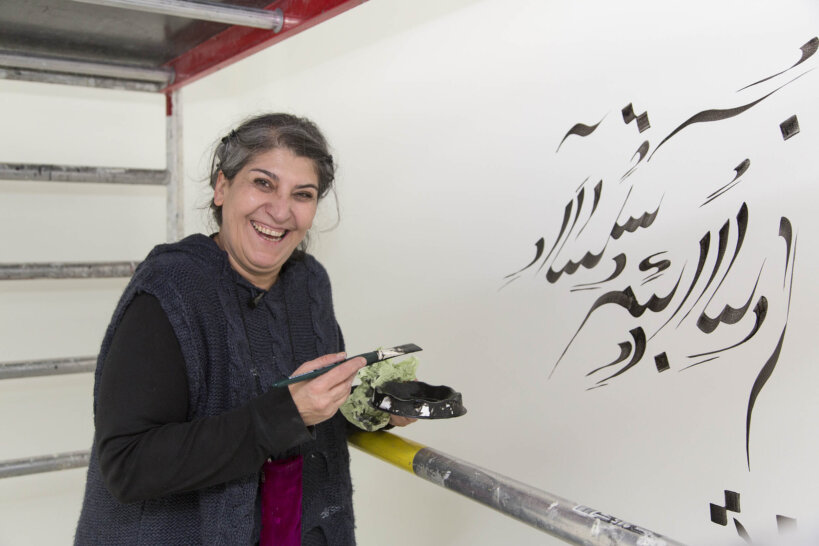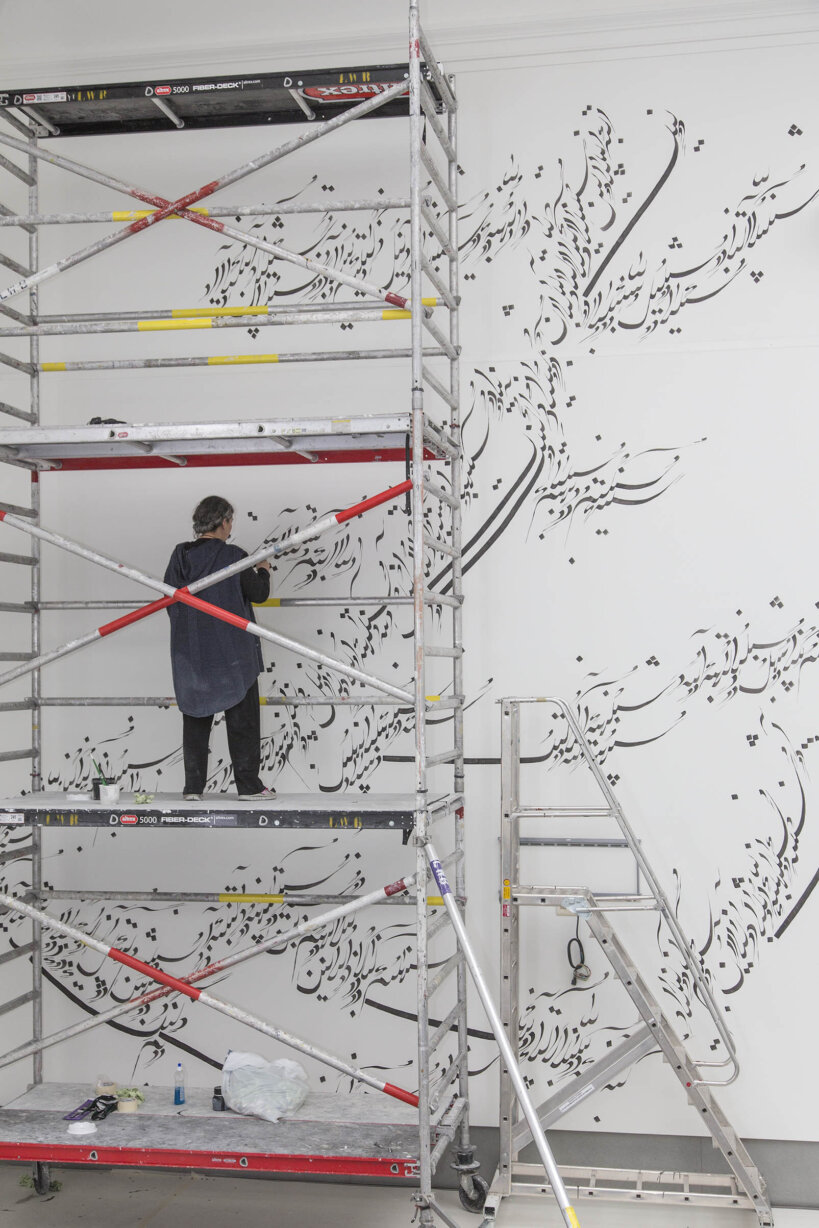Sociopolitical dimension
The Iranian artist Parastou Forouhar was born in Teheran in 1962. Since 1992 she has been part of the Iranian diaspora. She lives and works in Offenbach (Germany). Forouhar's work has an autobiographical character and a sociopolitical dimension. Her mother was an activist, her father a minister in the 1979 interim government. Both were murdered in 1998 for their open criticism of the Islamic Republic's human rights violations.
As an immigrant, she talks about the loss of her mother tongue, Farsi, which lives on only in her memory. Since 1995, she has performed her 'Written Rooms' in various places. With them, she wants to encourage the spectators to think about language and identity.
'Written Room'
In 2017, Forouhar also created a mural in the entrance hall of the museum in which she used the characters of the Persian alphabet. Despite the appearance of legibility, however, this text has no meaning.
What seems at first glance a loss of meaning can also be interpreted as an abstract visual language and a stimulating environment for subjective experience. At the same time, Forouhar also places a sociopolitical message in her 'Written Room'. In addition to her critical attitude towards the Iranian government and Muslim fundamentalism, her work deals with universal themes such as displacement, gender and cultural identity.
In Dialogue
As a result of 'Written Room', the museum started working on themes of art and identity.
This led to the development of 'In Dialogue': low-threshold discussion cards for non-native newcomers.


